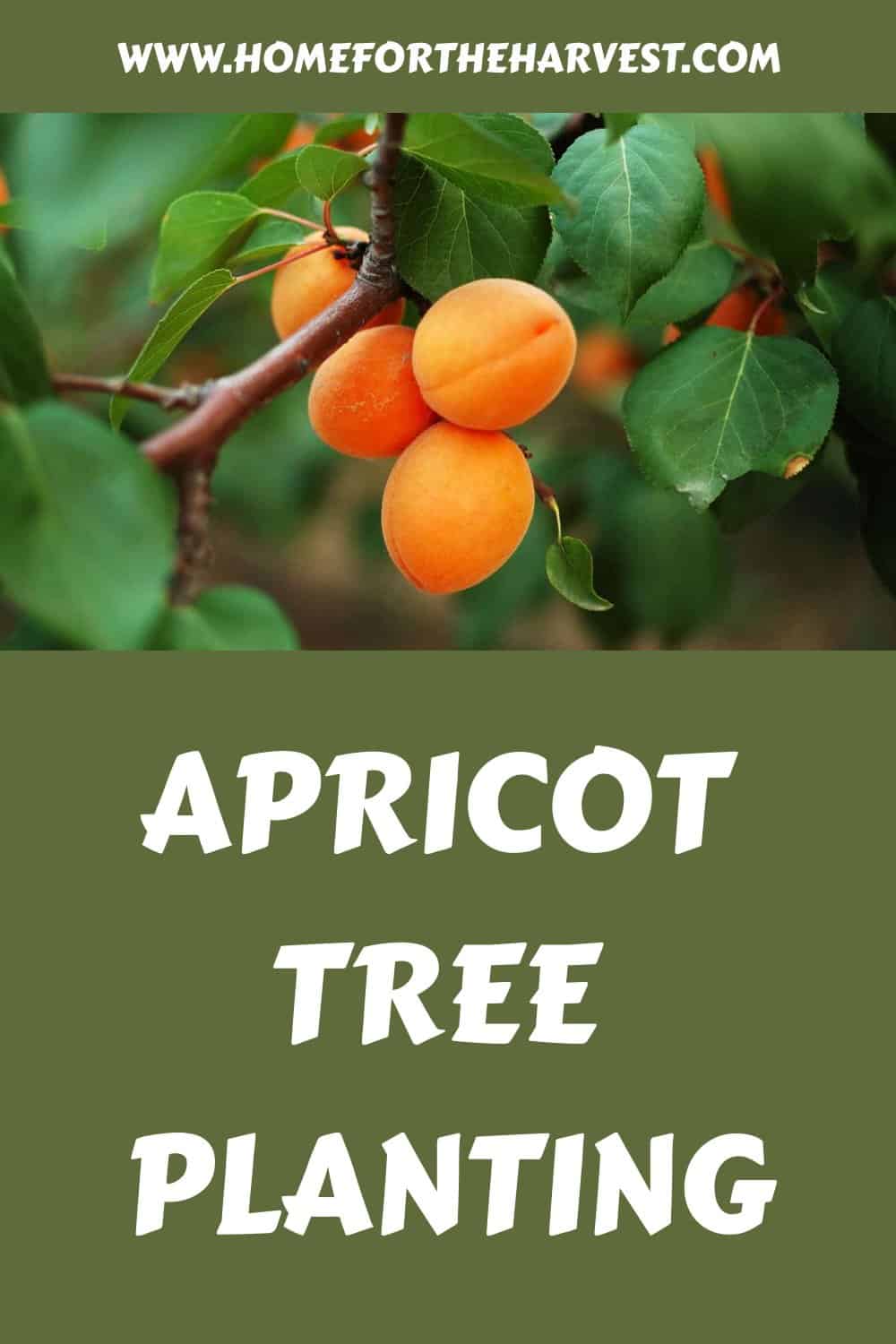Start by choosing a sunny spot for planting your new apricot tree. Dig a hole that is twice the width of the tree’s roots. Loosen any tight circling roots around the root ball and then place the apricot tree in the hole.
Fill in the hole with soil, packing it gently around the roots. Make sure not to bury the tree any deeper in the hole than it was in the pot. Water the tree well after planting, and then mulch the soil surface with coarse, woody organic mulch.
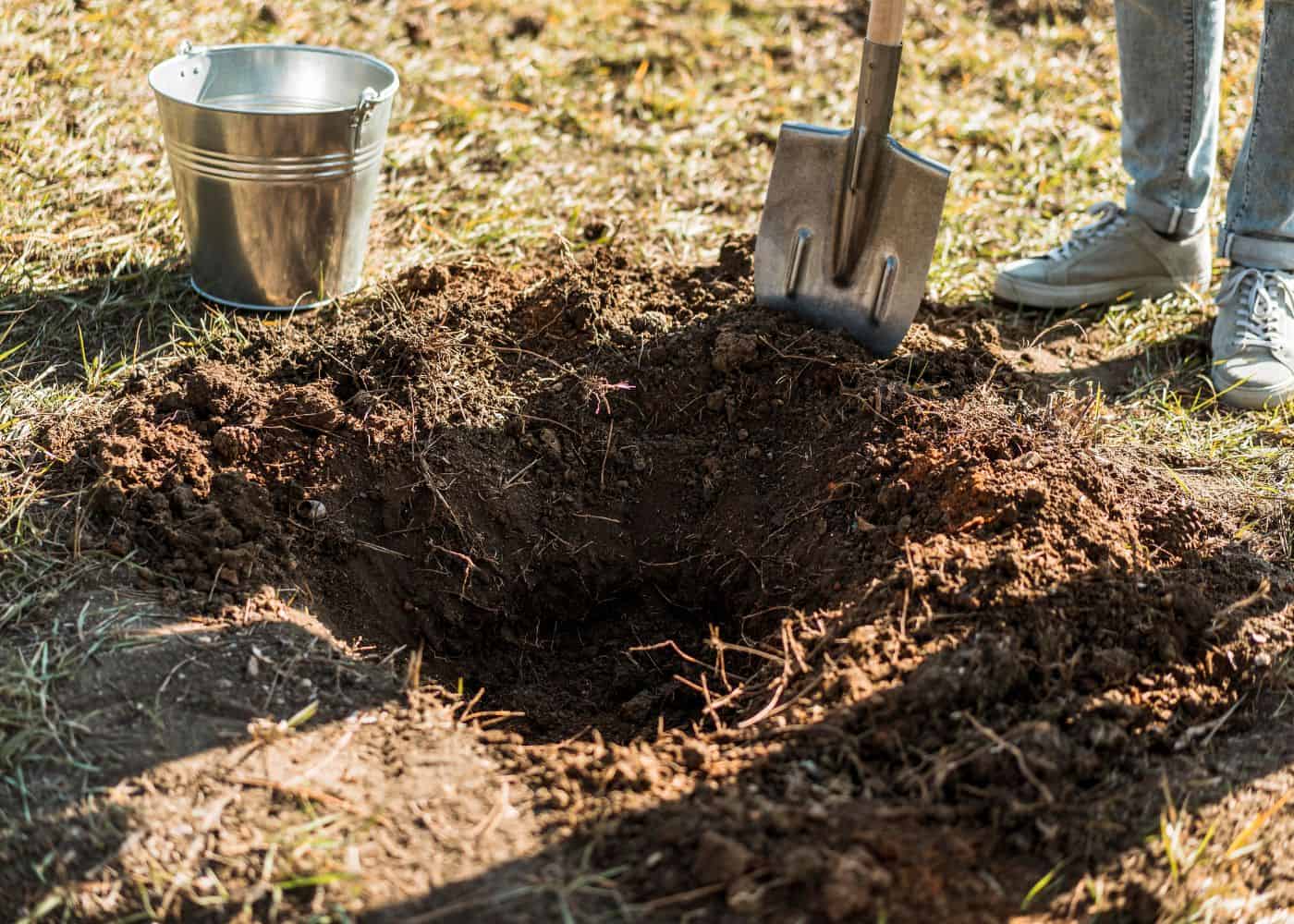
The basics of apricot tree planting
Apricot trees grow best when planted in a sunny planting location where the soil easily drains excess water rather than letting it puddle over top of the roots. The tree’s roots should be kept moist during and after planting, and a top dressing of mulch can help keep weeds down and keep moisture in the soil.
Here’s a checklist:
- USDA Zone 5-9
- Full sunlight
- Well-drained soil (not high in clay)
- Neutral or slightly alkaline pH
- Room to grow about 15 feet high by 15 feet wide
Most varieties are self-fruitful, meaning that you can plant only one apricot tree and expect to get fruit from it. Just be sure to check that the variety is self-fruitful when you buy it, as there are some cultivars that require a pollination partner to thrive.
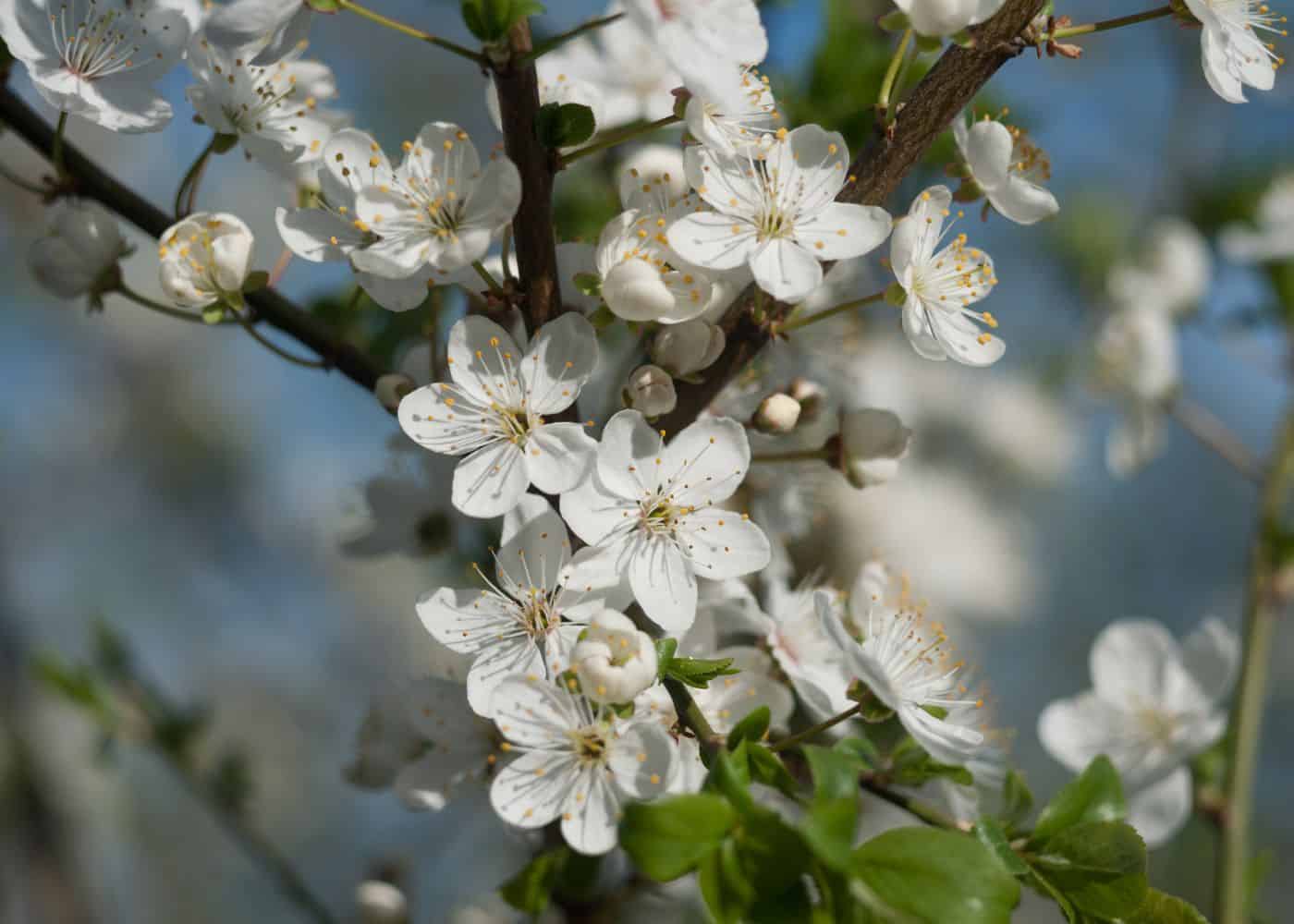
When to plant apricot trees
Apricot trees are best planted in the spring or fall. They can be planted in summer but are more likely to become stressed by hot, dry weather.
In climates where the ground does not freeze in winter, apricots can be planted throughout the cooler months. However, in areas with very cold winters, it’s best to wait until spring to plant apricot trees.
Where to plant apricot trees
Plant your apricot tree in a sunny location in a temperate climate. These trees prefer well-drained sandy loam soil that has a neutral or slightly alkaline pH.
Climate requirements of apricot trees
Apricot trees can typically be grown consistently in USDA Zones 5-8. The trees may survive in chilly Zone 4 and in hot Zone 9, but may not fruit consistently. They need a certain number of “chilling” hours in the winter to fruit properly, and different apricot tree cultivars have different chilling requirements.
Varieties with low-moderate chilling requirements are commonly grown in California and other temperate climates. Some tasty choices include Moorpark and Blenheim. Varieties with significant required chilling hours should be avoided in Zones 8-9, where they may not get enough cold weather in the winter to fruit properly.
Cold-hardy cultivars for Zones 4-5 include Harglow, Goldrich, Scout, Alfred, and Harlayne. In the coldest zones, try cultivars like Mandan, Moongold, or Sungold, which have been known to survive and fruit sporadically in areas as cold as Zone 3.
Apricot trees also grow best in a dry climate. Apricots grown in humid climates are prone to disease (although there are some tolerant, disease-resistant varieties, like the Alfred Apricot). Pests such as the Plum Curculio are also more common in certain areas.
“The ideal apricot climate has steadily cold winters, steadily warm springs, and low humidity. Still, the ripe fruit is so luscious and the tree can be so pretty that apricot may be worth a try in regions with less-than-perfect growing conditions.”
Landscaping with Fruit, by Lee Reich
Sunlight requirements for apricot trees
Apricot trees should be planted in a full-sun location. This means the leaves should receive at least 6-8 hours of direct sunlight each day. If apricots are grown in too much shade, they will produce fewer fruits.
Soil needs of apricot tree roots
You’ll also want to check out the soil in your prospective planting location. Well-drained soil like a sandy loam is preferable to heavy, poorly-drained soil like silty clay. Apricot trees are susceptible to root rot, so it’s important to make sure that the planting site has good drainage, if at all possible. If your soil is poorly drained, work in some organic matter like compost prior to planting.
To test your soil’s drainage, dig a hole about 12 inches deep and fill it with water. If the water drains away within a few hours, the drainage is probably good. If the water takes longer than overnight to drain, you may want to consider planting apricots in an elevated area to discourage root rot (especially if you live in a rainy climate).
In terms of soil pH, these trees thrive in a neutral or slightly alkaline pH. The soil apricot trees are to be planted in can be amended prior to planting if the planting site is overly acidic. Apricot tree growing tends to be much more successful when time is taken to ensure a good environment from the beginning rather than trying to fix conditions later.
Landscape planning with apricots
Lastly, plan for the mature tree size when you choose where to plant it. Apricots can easily reach 15 feet tall and wide and need space to develop properly. Avoid planting apricots too close to houses, sidewalks, or other obstacles that could get in the way of the tree’s growth.
You’ll also want to plant your apricot somewhere you can enjoy the spring blossoms. Plant apricots where the early blooms can be enjoyed. The flowers bloom as clusters of gorgeous pink blossoms and are well worth planning around in the landscape.

Apricot tree varieties to consider
There are many different apricot tree varieties to choose from, and the best one for you will depend on your climate and preferences.
If you live in a warmer climate (Zones 7-9), consider planting an apricot tree cultivar like ‘Early Gold,’ ‘Hale’s Early,’ or ‘Burbank.’
For a cooler climate (Zones 5-6), try a cultivar like ‘Moongold,’ ‘Goldcot,’ or ‘Patterson.’ These later-blooming varieties are less likely to be damaged by sudden cold snaps in the spring.
You’ll also want to look for cultivars that are disease-resistant. Ripe apricots are prone to brown rot, and the trees can be struck with fungal conditions like powdery mildew, apricot rust, and Verticillium wilt. Some apricot tree cultivars that are known for their resistance to the disease include ‘Alfred,’ ‘Hale’s Early,’ ‘Burbank,’ ‘Perfection,’ and ‘Goldcot.’
Once you’ve selected a variety, check the label to make sure that it is self-fruitful. Some apricot tree cultivars require a second apricot tree for pollination in order to produce fruit, so be sure to verify that the one you’re buying will be able to pollinate itself.
How to plant apricot trees
Once you’ve selected the perfect location for your apricot tree, it’s time to get down to the business of planting! Here are the steps you’ll need to take.
Dig a hole that’s twice the width of the tree’s roots. This will give the roots plenty of room to spread out and take hold in the new location. You can also loosen any tight circling roots around the root ball before placing the apricot tree in the hole.
Pour some water into the hole and see how long it takes to drain away. Apricots prefer well-drained soil, and the water poured into the hole should drain in under an hour. If a puddle of water remains, you may need to amend the soil with organic matter to improve drainage.
Place the root ball into the planting hole. Fill in the hole with soil, packing it gently around the roots. Be careful not to bury the tree any deeper in the hole than it was growing in its pot. Backfill the hole with the soil that came out of it, trying not to leave many air pockets.
Water your apricot tree well after planting. Watch to see that the water drains nicely down into the soil and then mulch the soil surface with coarse, woody organic mulch. This will help keep weeds down and hold moisture in the soil around the apricot tree’s roots.
You may wish to add a tree stake to your young tree. This is especially true for dwarf varieties, which may not be self-supporting. Check the tag on your tree for any instructions about staking.
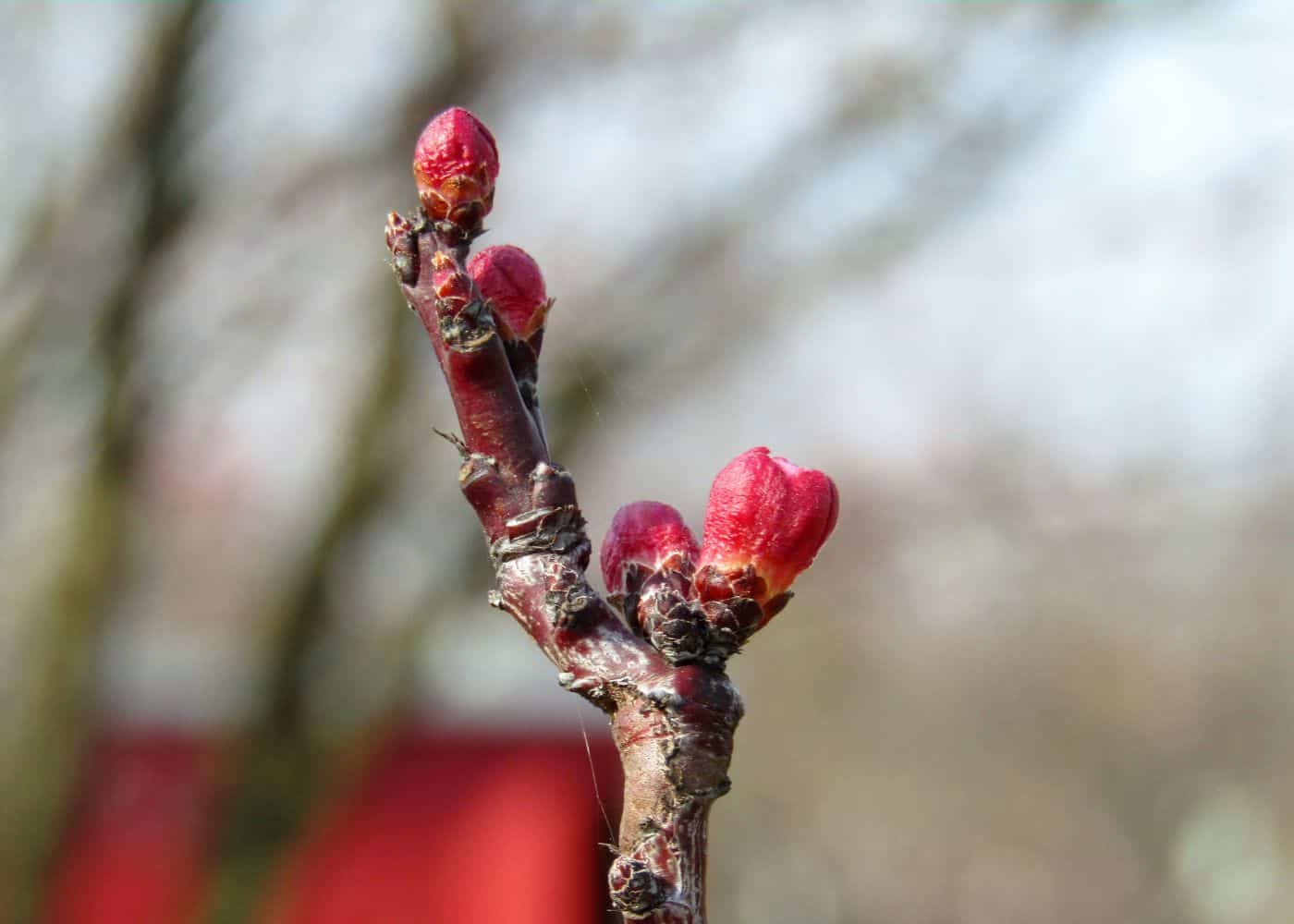
Caring for young apricot trees after planting
Now it’s time to think about apricot care. For the first year or two, water the young tree frequently. Pull out any weeds that compete with the base of the tree. This is also a good time to prune the tree into a specific shape. Fertilize your apricot tree every spring with a fruit tree fertilizer.
Watering newly planted apricot trees
When apricot trees are young, they require water more frequently than when they mature. Water the tree every few days for the first six weeks after planting while the tiny feeder roots develop. Water your apricot tree deeply about once a week during its first growing season. Once the tree is established, it will need less frequent watering.
Fertilizing apricot trees
Apricots are heavy feeders and benefit from regular applications of fertilizer. A general-purpose, balanced fruit tree fertilizer can be used. Apply it according to the instructions on the package (more is not better).
Fruit trees are typically fertilized in early spring, just as the flower buds are opening, and hopefully after any late frost. Timing will depend on sun exposure, with the trees in sunny spots typically blooming and setting fruit earlier.
Apricot trees are commonly deficient in select nutrients. Yellow leaves may indicate some kind of mineral deficiency, such as nitrogen deficiency or iron chlorosis. Fertilize regularly and decrease watering frequency to minimize nutrient transport. Water deeply on an infrequent basis instead of regularly (once the tree’s roots are established. You can also consider an iron-fortified fruit tree fertilizer (particularly if you have alkaline soil).
Mulching apricot trees
Mulch apricot trees help keep the roots cool and moist and to prevent weeds from sprouting up around the base of the tree. Apply a 3-inch layer of coarse, woody organic mulch-like composted shredded wood made from yard trimmings.
Spread it in a circle around the apricot tree’s drip line (the edge of the tree’s canopy). Be careful not to pile the mulch against the tree’s trunk, as this can encourage rot. Instead, leave a 6″ buffer between the mulch and the base of the tree.
Pruning apricot trees
Most growers like to shape their newly planted apricot trees into either a modified central leader form or an open center form. You can also espalier apricots into a fan shape against a wall or fence. Keep the branches at least 4-6 inches apart to allow for proper air circulation and minimize disease.
Prune apricot trees annually to remove any dead or diseased wood and to shape the tree. Apricots produce fruit on 1 to 3-year-old wood, so annual pruning is needed to encourage new growth and a good crop of apricots. Take note of any older wood that will no longer bear fruit and remove it to make room for new growth.
Start by removing any broken branches, as well as dead or diseased branches. Next, cut back any crossing branches or branches that are growing into the center of the tree. Finally, trim back any long, wayward branches to keep the apricot tree’s overall shape compact.
Apricot trees should be pruned annually in late winter or early spring before new growth begins. Ideally, prune just prior to the new growth starting in the spring to minimize disease. Those in climates with wet springs can wait until early summer to prune.
Make pruning cuts with clean equipment. Cut each branch at a 90-degree angle to minimize the cut surface area.
Thinning apricots
Apricots don’t necessarily require thinning in the home orchard, but they can help the tree develop large fruits. After the tree has set fruit, remove some of the young fruits so that the remaining baby apricots are a few inches apart.
Harvesting apricots
Harvest the sweet fruit in late summer or early fall. While not as juicy as some other stone fruit, a well-timed apricot harvest can still yield up to 150 pounds of juicy fruit per tree.
Fruit should be slightly soft to the touch. Fruit production on even a little tree can be quite heavy. Eat fresh apricots right in the field for a truly delicious experience.
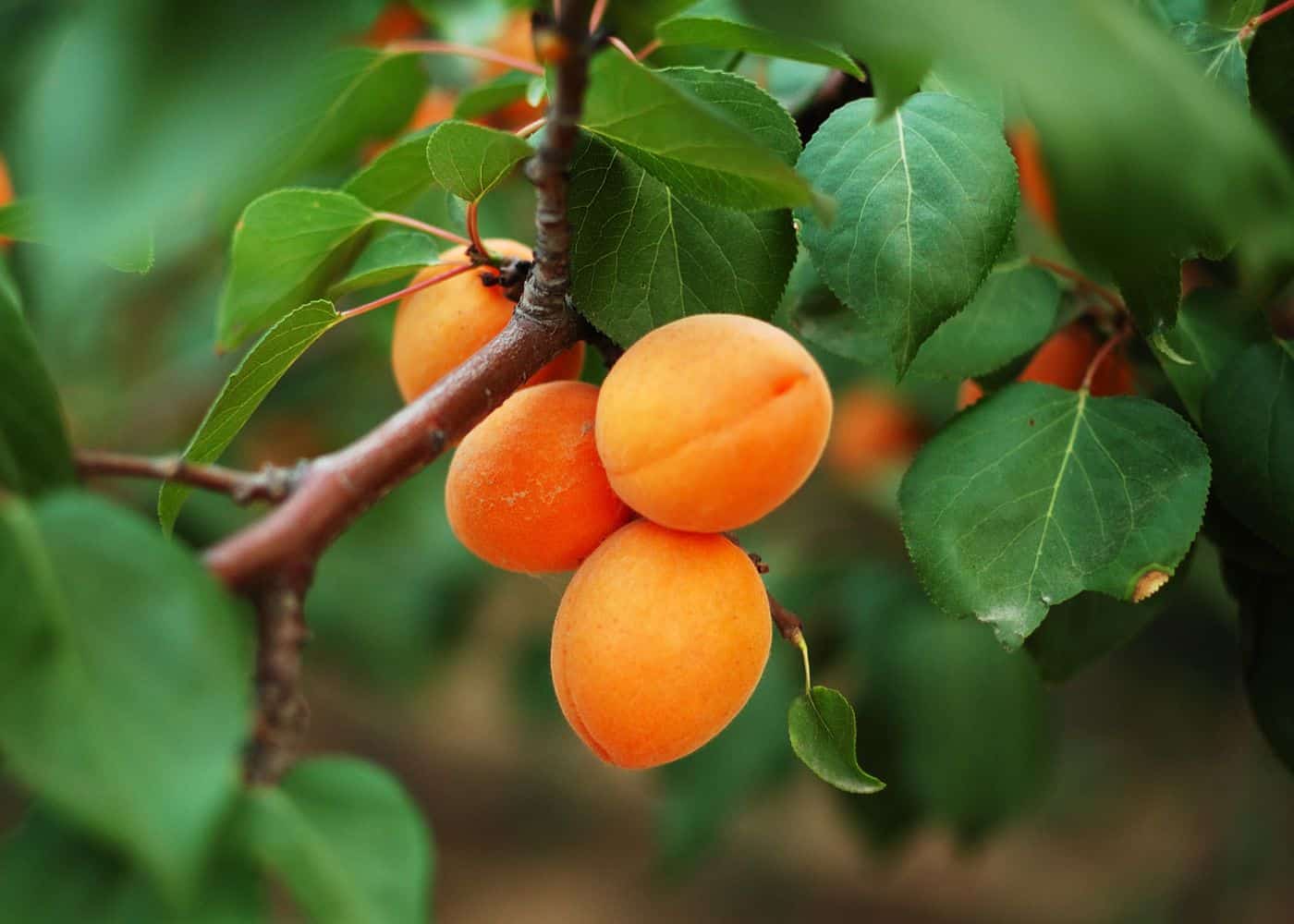
Growing apricot trees
Growing your very own apricot tree is just as rewarding with beauty as it is fruitful. Apricot blossoms are breathtaking in the summer, and the tree has a lovely fall color in autumn. Apricot tree care is also not overly complicated, especially if you live in a dry climate without wide springtime temperature swings.
Unfortunately, there are quite a few apricot tree diseases to contend with. Start with a disease-resistant variety. Proper planting in a sunny area with good air circulation is your second defense against disease.
Wood-boring insects like peach twig borers can also be a problem. Sapsuckers, like aphids can be irritating but are usually not fatal to the tree.
Keep the soil evenly moist for the first year (especially for bare root trees). Potted trees will need daily watering in hot weather. Check that container-grown trees have been watered consistently before buying them.


